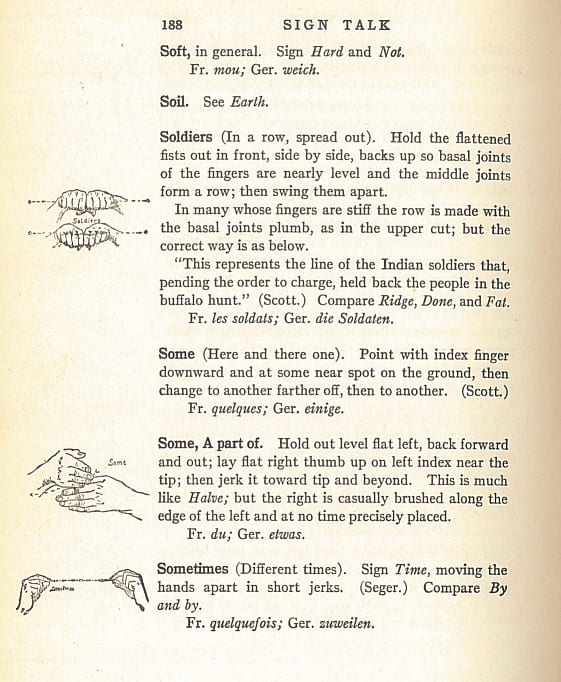Silent Drill by Signs – a Scout Sign System from 1934
By H Dominic W Stiles, on 16 February 2018
 Written in 1934 or 1935 by Martin Baker, who was Assistant County Commissioner for the Training of Scouters in Birminmgham, Silent Drill by Signs tells us that,
Written in 1934 or 1935 by Martin Baker, who was Assistant County Commissioner for the Training of Scouters in Birminmgham, Silent Drill by Signs tells us that,
There is a fascination in Drill by Signs, a sense of good-will, cheeriness and scout atmosphere which is not to be found in Sergeant-Major’s methods.
Those participating experience an increased alertness, and can attain by the Sign method a smartness hitherto impossible, and this without domineering or bullying.
The idea of using Signs for drill is not new- some of the signs are as old as the hills; it is in the method of use that the new feature lies, and it will be found to make all the difference between perfect performance and chaos.
Although Drill by Signs has been taught on the Wood Badge Courses sincve the very beginning of Training, it has not become the onl;y scouty way of moving scouts, because the method lacked one essential of any good drill, an adequate warning.
The Sign given not only showed the Scouts what was required, but it was also the signal to do it! Hence the brightest moved first, and there was no unanimity of movement, which is the soul of smart drill.
The method here described was first used as a camp-fire item at Oslo, during the “Calgaric Cruise” in the Baltic. A team of twelve Scouters volunyteered to be drilled by this method, and the success of the attempt prompted others to take it up. I therefore offer it to Scouters and Guuiders generally as a new and successful method which I believe will prove worth trying.
The Signs I have suggested are a mixture of those taught at Gilwell, American Indian Sign Language, and some made up on the spur of the moment, usually good common sense, descriptive of the required action where possible.
Other Signs may be invented as desired, but keep them simple, and if possible descriptive.
 It is interesting to compare the sign used for ‘form line,’ with the Indian sign for ‘soldiers’ in Ernest Thomas Seton‘s 1918 book, Sign Talk. In the scout version, Baker has the hands held high to be seen more clearly. Seton was a pioneer of the Boy Scouts of America. That book was in turn heavily influenced by the U.S. general, Hugh L. Scott, who had learnt Indian signs from a Kiowa, I-See-O. Click on the images for a larger size.
It is interesting to compare the sign used for ‘form line,’ with the Indian sign for ‘soldiers’ in Ernest Thomas Seton‘s 1918 book, Sign Talk. In the scout version, Baker has the hands held high to be seen more clearly. Seton was a pioneer of the Boy Scouts of America. That book was in turn heavily influenced by the U.S. general, Hugh L. Scott, who had learnt Indian signs from a Kiowa, I-See-O. Click on the images for a larger size.

 We have a copy of Seton’s book that is heavily annotated by Paget.
We have a copy of Seton’s book that is heavily annotated by Paget.
I think our copy of Silent Drill is pretty rare.
 Close
Close

